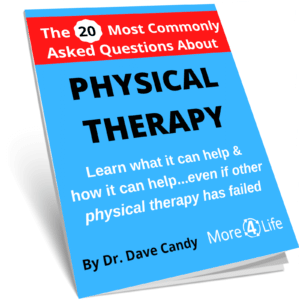Stretching in physical therapy is a simple and effective way to improve flexibility, reduce pain, and prevent further injury. As a result, we will discuss the importance of stretching in physical therapy; and how it helps people recover from injuries/surgeries and improve their overall quality of life.

What is Stretching?
Stretching is a form of exercise that involves decreasing the stiffness of muscles.
Moreover, this can be done in a variety of ways, including:
1. Static stretching: holding a position for a period of time
2. Dynamic stretching: actively and slowly moving the body through a range of motion
3. Proprioceptive neuromuscular facilitation (PNF) stretching: stretching that is facilitated by a physical therapist
The Benefits of Stretching in Physical Therapy
Stretching offers a wide range of benefits for physical therapy patients. These benefits include:
1. Improved Range of Motion: Stretching helps to increase range of motion in the joints and muscles. By stretching, it can also improve the ability to perform daily activities and physical therapy exercises.
2. Reduced Pain: Stretching can help to alleviate pain caused by injuries, chronic conditions, or poor posture.
3. Improved Circulation: Stretching can help to improve blood flow to the muscles, which can aid in the healing process.
4. Reduced Risk of Injury: Dynamic stretching helps to prepare the muscles for physical activity and reducing the risk of injury.
5. Improved Balance and Coordination: Stretching can help to improve balance and coordination.
Furthermore, balance and coordination can be particularly important for older adults or those with neurological conditions.
Physical Therapy Stretching Tips
Additionally, here are a few tips to keep in mind if you're looking to incorporate stretching into your daily routine,:
1. Start Slow: If you're new to stretching, start with simple stretches and gradually increase the intensity and duration over time.
2. Focus on Major Muscle Groups: When stretching, focus on the major muscle groups in the body, including the legs, hips, back, chest, shoulders, and neck.
3. Hold Each Stretch for 30-60 Seconds: When performing static stretches, hold each stretch for 30-60 seconds, making sure to breathe deeply and relax into the stretch.
4. Avoid Bouncing: Bouncing or jerking when stretching can actually increase the risk of injury, so it's important to move slowly and smoothly through each stretch.
4. Stretch Regularly: To see the most benefits from stretching, it's important to stretch regularly. As a result, aim to stretch at least two to three times a week, if not more.
Need Help with Stretching in Physical Therapy?
Stretching can be a great way to improve range of motion and reduce pain, but it's not always enough to address more serious injuries or chronic conditions.
Therefore, it's important to seek help from a physical therapist if you're experiencing persistent pain or limited mobility,
Additionally, physical therapists can assess your condition and develop a personalized treatment plan. They will also guide you through exercises and stretches that are appropriate for your specific needs.
Request an Appointment Today
At More 4 Life, our team of experienced physical therapists is dedicated to helping our patients achieve their goals and improve their quality of life. We offer a range of services, including manual therapy, therapeutic exercise, and neuromuscular re-education.
If you're ready to start your journey to better health and wellness, we invite you to request an appointment at More 4 Life.
Our team of experienced physical therapists will work with you to develop a personalized treatment plan that addresses your unique needs and goals.
Contact us today to schedule your first appointment at 314-941-3970.

